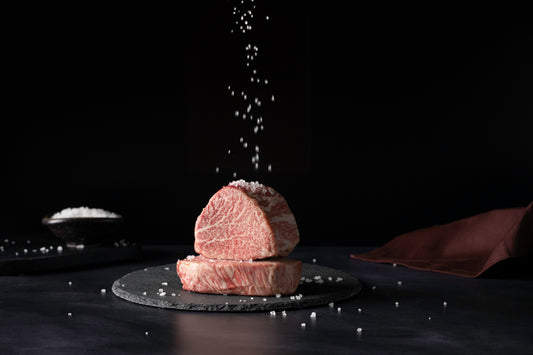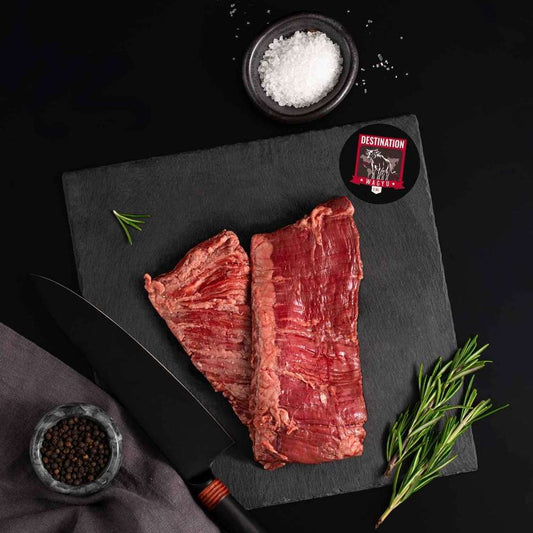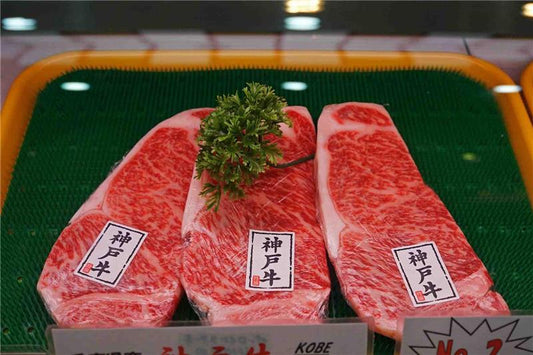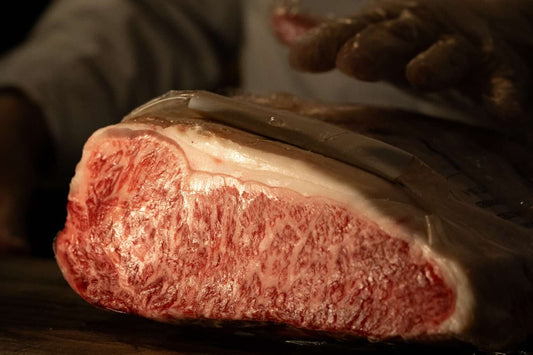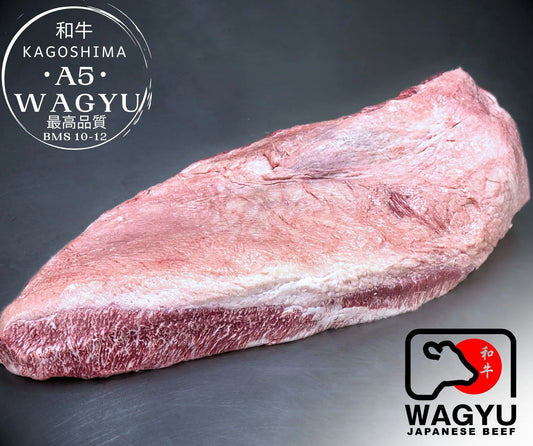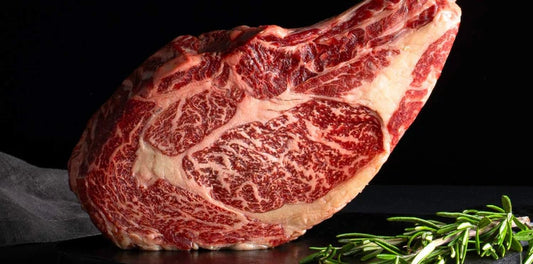Wagyu beef has long been synonymous with luxury in the culinary world. When you think of Wagyu, images of meticulously marbled steaks, rich in umami and melting on the tongue, immediately come to mind. However, in recent years, Wagyu has stepped beyond the realm of high-end steakhouses and found its way into one of the most beloved foods in the world: the burger. The Wagyu burger isn’t just another premium patty—it’s a fusion of culinary craftsmanship, science, and an appreciation for one of the most uniquely textured meats in the world.
This article is not for the casual diner who merely appreciates a good burger. Instead, it is crafted for chefs, butchers, food scientists, and industry professionals who want to understand every aspect of what makes a Wagyu burger a technical marvel. From the genetics of Wagyu cattle to the science of fat rendering, from grading scales to market economics, this article will dissect every aspect of the Wagyu burger experience.
As someone deeply entrenched in this industry, I’ve seen firsthand the evolution of Wagyu burgers from novelty menu items to serious gourmet offerings. What was once considered an impractical use of highly marbled beef is now a statement of culinary innovation. Let’s break down why.
Wagyu Beef: Genetics, Breed Types, and Quality Factors
The Genetic Superiority of Wagyu Cattle
Wagyu cattle are not simply another breed of beef cattle—they are a genetic anomaly. Unlike conventional cattle breeds, Wagyu possess a mutation in the myostatin gene, which inhibits muscle growth regulation and results in extreme intramuscular fat deposition. This isn’t just marketing hype; it’s a fundamental genetic trait that gives Wagyu its signature marbling and luxurious mouthfeel.
The high concentration of monounsaturated fats, omega-3, and omega-6 fatty acids in Wagyu fat makes it structurally and nutritionally distinct from conventional beef fat. This lower melting point (around 77°F or 25°C) leads to a buttery, almost creamy texture even when ground into a burger. This fat composition also contributes to the intense umami flavor profile, a critical distinction from traditional burgers that rely on external fats and seasoning for depth of flavor.
Understanding Different Wagyu Breeds
Not all Wagyu are created equal. While “Wagyu” translates simply to “Japanese cow,” there are several distinct breeds, each with its own fat distribution, texture, and flavor characteristics.
-
Kuroge Washu (Japanese Black) – The most well-known and widely raised Wagyu breed, known for its A5 marbling potential and high oleic acid content.
-
Akaushi (Japanese Red) – Offers a leaner, beefier flavor while still retaining exceptional marbling. Akaushi Wagyu burgers have a stronger meaty bite compared to Kuroge Washu.
-
Shorthorn (Nihon Tankaku) – A rarer breed, known for deeper, iron-rich flavor with less emphasis on fat. While not common for burgers, some chefs blend it with higher-marbled cuts for a balance of structure and umami.
-
Mishima (Rare Heritage Wagyu Breed) – Extremely limited in availability, but prized for its wild, gamey notes and fine-grained texture.
Japanese vs. Non-Japanese Wagyu Beef
Understanding the difference between Japanese Wagyu and Non-Japanese Wagyu is essential for professionals in this space. Japanese Wagyu, especially A5 Kuroge Washu, adheres to strict lineage controls and is often fed a meticulously formulated grain-based diet for up to 30 months to achieve the ideal marbling profile.
Conversely, American Wagyu is often a hybrid between Wagyu and Angus, resulting in less intense marbling but a stronger beef-forward profile. This makes American Wagyu particularly popular for burgers, where an overly rich fat content can sometimes be detrimental to patty structure. Australian Wagyu, which operates under a BMS scale similar to Japan’s, tends to fall somewhere between Japanese and American Wagyu in both marbling and flavor.
Wagyu Beef Grading Systems: Quality Metrics and Impact on Burgers
Japanese Meat Grading Association (JMGA) Standards
In Japan, Wagyu beef is graded by the JMGA (Japanese Meat Grading Association) using a dual system:
-
Yield Score (A, B, C): Measures meat-to-carcass ratio, with A being the highest.
-
Quality Score (1–5): Evaluates marbling, color, firmness, and fat quality.
Thus, A5 Wagyu represents the absolute pinnacle of beef quality, with intense marbling and superior fat composition. However, does A5 Wagyu make the best burger? Not necessarily. When ground, excessive fat can create a greasy or overly soft texture, making a BMS 6–8 range often preferable for burger applications.
USDA vs. Australian Wagyu Grading
-
USDA Prime vs. Wagyu A5: USDA Prime, the highest American standard, does not approach the marbling levels of even BMS 5 Wagyu.
-
Australian Wagyu (AUS-MEAT BMS Scale): Ranges from BMS 3 (mild marbling) to BMS 12 (ultra-premium). A BMS 7-9 burger often strikes the best balance of fat integration and patty cohesion.
Wagyu Beef Butchery & Processing for Burgers
Choosing the Right Cuts for Wagyu Burgers
One of the biggest mistakes I see chefs make is assuming that any Wagyu cut will make a great burger. This couldn’t be further from the truth. Unlike steaks, which are defined by tenderness and marbling, burgers require a precise balance of fat content, structural integrity, and grind texture.
The best cuts for Wagyu burgers include:
-
Chuck: A classic choice for burgers, offering a natural 80/20 balance of meat-to-fat.
-
Brisket: Adds a deeper, almost smoky flavor due to its connective tissue content.
-
Short Rib: Richly marbled, contributing to the signature Wagyu juiciness.
-
Ribeye: A luxurious option, but often requires blending with leaner cuts to maintain structural integrity.
Fat Content and Wagyu Burger Composition
Unlike traditional beef, where lean-to-fat ratios are rigidly set, Wagyu demands a more flexible approach. While 80/20 is standard for traditional burgers, Wagyu may perform better at 70/30 or even 65/35, depending on the BMS score of the beef. Too much fat can cause excessive shrinkage as it renders, resulting in a mushy or greasy burger.
Grinding Techniques for Wagyu Beef
-
Single vs. Double Grind: Single grind preserves more textural variation, while double grind creates a silkier patty.
-
Coarse vs. Fine Grind: A coarse grind retains beefy chew, while a fine grind creates a softer, almost pâté-like bite.
The Science of Cooking a Wagyu Burger
Why Wagyu Fat Behaves Differently
Wagyu fat melts at a much lower temperature than conventional beef fat. This means that traditional high-heat grilling can lead to excessive fat loss. A more controlled heat application, such as using a flat-top griddle, preserves Wagyu’s unique fat structure while still achieving proper Maillard browning.
Best Cooking Methods for Wagyu Burgers
-
Griddle: Best for even fat rendering and crust development.
-
Sous Vide: Ideal for precise control, but lacks the depth of a good sear.
-
Charcoal Grilling: Adds complexity but risks fat drippage flare-ups.
Flavor Profile & Sensory Experience of a Wagyu Burger
Umami & Fat Perception: Why Wagyu Feels Different in the Mouth
The defining feature of a Wagyu burger is its incredibly rich mouthfeel, a direct result of the unique fat composition found in Wagyu beef. Unlike conventional beef, Wagyu contains higher levels of monounsaturated fats, oleic acid, and omega-3 fatty acids, which contribute to a silky, almost creamy texture when cooked. This results in a buttery, melt-in-your-mouth sensation that is noticeably distinct from standard beef burgers.
From a sensory standpoint, Wagyu’s umami profile is significantly higher than traditional beef due to its fat-soluble flavor compounds. The high concentration of glutamic acid, a key amino acid responsible for umami, enhances depth of flavor without the need for excessive seasoning. This is why Wagyu burgers often require only minimal seasoning—too much salt or spice can mask the natural sweetness and depth of the fat.
Differences Between 100% Wagyu and Hybrid Wagyu Burgers
One of the biggest misconceptions in the market is that a 100% Wagyu burger will always be superior. While ultra-marbled A5 Wagyu is highly prized for steaks, grinding it into a burger presents challenges. The extreme fat content (sometimes exceeding 50%) can lead to a burger that lacks structural integrity, feeling overly greasy or too soft.
Many high-end chefs and butchers have found that a hybrid Wagyu burger (e.g., blending Wagyu with leaner cuts like Akaushi or even Angus) strikes the best balance. The goal is to retain the signature umami richness of Wagyu while maintaining the traditional "bite" of a great burger.
Impact of Wagyu’s Oleic Acid on Sensory Experience
Oleic acid, the predominant fatty acid in Wagyu beef, has been linked to heightened flavor perception. Studies suggest that oleic acid enhances the ability of the tongue to detect savory flavors, explaining why a Wagyu burger has an intensely rich depth that lingers longer on the palate compared to conventional beef. Additionally, the lower melting point of Wagyu fat ensures that the burger remains juicy at lower internal temperatures, making medium-rare the ideal doneness for Wagyu burgers.
Pairing a Wagyu Burger: Buns, Toppings, and Accompaniments
Best Bun Choices for Wagyu Burgers
Given the richness of Wagyu fat, bun selection becomes a critical balancing factor. A poorly chosen bun can either absorb too much fat and become soggy or fail to support the structural integrity of the burger.
-
Brioche Bun: The most common choice for Wagyu burgers due to its buttery softness and slightly sweet flavor, which complements the umami richness.
-
Japanese Milk Bun (Shokupan): Offers a pillowy texture with slight elasticity, excellent for Wagyu's delicate fat balance.
-
Potato Roll: A more neutral option, offering slight chew and absorbency without overpowering the beef flavor.
Crusty buns or those with too much chew (e.g., ciabatta, sourdough) are generally not ideal as they compete with Wagyu’s tenderness.
Toppings That Complement, Not Overpower
The biggest mistake chefs make with Wagyu burgers is overloading them with toppings that mask the natural umami of the beef. The goal should be enhancement, not domination.
-
Caramelized Miso Onions: The combination of miso paste and caramelized onions deepens the umami experience.
-
Truffle Aioli: Truffle enhances the natural earthy richness of Wagyu fat without overwhelming it.
-
Aged Cheese (Gruyère, Comté, or Aged Cheddar): These cheeses add depth without masking the delicate fat profile.
-
Japanese Pickles (Tsukemono): A small touch of acidity from pickled daikon or ginger cuts through the richness without overpowering the palate.
Best Cheese Pairings
While American cheddar is the traditional choice for burgers, it often lacks the nuanced depth that a Wagyu burger demands. Instead, consider:
-
Gruyère: Buttery, nutty, and perfectly complements Wagyu’s fatty texture.
-
Aged Cheddar: Brings a sharp contrast that enhances the savory notes of Wagyu fat.
-
Taleggio: A soft, funky cheese that pairs well with Wagyu’s umami-rich fat composition.
Wine, Whiskey, and Beer Pairings for Wagyu Burgers
Wagyu’s high fat content and umami profile demand pairings that provide acidity, tannins, or effervescence to balance the richness.
-
Wine Pairing: A full-bodied Bordeaux or Barolo provides the tannins needed to cut through Wagyu’s fat.
-
Whiskey Pairing: A smoky Islay Scotch (e.g., Laphroaig) complements the buttery fat with its peatiness.
-
Beer Pairing: A dry Belgian Tripel or West Coast IPA provides the crisp bitterness needed for contrast.
The Business of Wagyu Burgers: Economics, Pricing & Market Trends
Why Wagyu Burgers Command a High Price Point
Wagyu is among the most expensive beef in the world, and this cost naturally extends to Wagyu burgers. The feeding program alone (which includes a carefully controlled grain diet for over 600 days) makes Wagyu production significantly more expensive than commodity beef. Additionally, strict Japanese import regulations and limited supply further drive up costs.
Consumer Psychology: What Makes People Pay More for Wagyu?
The Wagyu name carries prestige, even among casual diners. Many consumers associate Wagyu with luxury, exclusivity, and indulgence, making them willing to pay a premium price for the experience. However, education is key—many consumers still don’t understand the differences between true Japanese Wagyu, hybrid Wagyu, and misleading “Wagyu-style” marketing.
Sourcing & Supply Chain Challenges in Wagyu Beef
Unlike conventional beef, Wagyu requires specialized handling throughout its entire supply chain. From temperature-controlled shipping to rigorous traceability standards, importing and distributing Wagyu beef is a complex endeavor. Many high-end restaurants and butchers source directly from Japan or premium Australian farms to ensure authenticity.
Challenges & Misconceptions in the Wagyu Burger Industry
Misleading Marketing Tactics: "Wagyu-Style" and Wagyu Blends
One of the most pervasive challenges in the Wagyu burger industry is misrepresentation and deceptive marketing tactics. Many consumers, even those willing to pay a premium for a high-end burger, do not fully understand the nuances of Wagyu beef. This lack of knowledge has led to restaurants and suppliers marketing burgers as "Wagyu" when they contain only a small percentage of Wagyu beef, sometimes as little as 20%, blended with conventional Angus or other commodity beef.
While blended burgers can be well-balanced in terms of flavor, texture, and structure, the issue arises when menus fail to disclose the actual Wagyu content and origin. Some establishments label a product as "Wagyu-style," a term with no legal definition, further confusing customers. Industry professionals must advocate for transparency and education, ensuring that customers know whether they are eating 100% Wagyu beef, a Wagyu hybrid, or a misleadingly marketed product.
To maintain integrity in the premium burger space, high-end chefs and butchers should ensure proper labeling, clear sourcing information, and education for consumers on Wagyu beef’s grading, marbling scores, and genetic origins. This helps build trust and maintains Wagyu’s reputation as a luxury product.
Why 100% Purebred Wagyu May Not Always Make the Best Burger
At first glance, a burger made from 100% A5 Wagyu beef might seem like the ultimate indulgence. However, in practice, it presents several structural and sensory challenges. A5 Wagyu has an exceptionally high intramuscular fat content, which makes it phenomenal for steaks, where thin slices allow for even rendering and a balanced fat-to-meat ratio. However, when ground into a burger, the excess fat can overwhelm the meat fibers, leading to a greasy or overly soft texture that lacks the characteristic chew of a traditional burger.
Many chefs and butchers have found that blending Wagyu with slightly leaner cuts—or using lower BMS scores, such as BMS 6-8 rather than BMS 10-12—creates a more balanced burger that retains the signature Wagyu juiciness without being overly rich. Hybrid blends that incorporate Akaushi Wagyu, grass-fed beef, or dry-aged lean cuts can enhance umami depth while improving textural integrity.
The key takeaway is that 100% purebred Wagyu is not inherently the best option for a burger, and sometimes strategic blending can yield a superior eating experience.
Structural Challenges in Making a Purely Wagyu Burger
Another issue with high-fat Wagyu burgers is fat rendering behavior. Traditional beef burgers rely on a balance of lean meat for structure and fat for juiciness. However, in a pure Wagyu burger, the high concentration of finely distributed fat melts at a much lower temperature (~77°F / 25°C), which can cause the patty to lose cohesion when cooked.
If the fat renders too quickly, the burger may shrink excessively, lose its juicy texture, or even collapse due to the lack of connective tissue support. Many chefs counteract this by:
-
Using a coarser grind to retain a firmer structure
-
Keeping patties thicker to prevent over-rendering
-
Cooking at a slightly lower temperature than traditional beef burgers
Understanding fat distribution, grind size, and patty construction is crucial when working with Wagyu, as these factors will determine whether the final burger is a decadent success or an oily disappointment.
Counterfeit Wagyu in the Global Market
A more insidious problem facing the Wagyu industry is counterfeit Wagyu—beef falsely labeled as Wagyu or Wagyu-grade when it is, in reality, ordinary beef with high marbling. Due to Wagyu’s premium status, some unscrupulous distributors attempt to pass off crossbred or even non-Wagyu beef as authentic Japanese Wagyu, often charging inflated prices for a product that does not meet true Wagyu standards.
Professionals in the meat industry should be vigilant about sourcing beef from verified suppliers, ensuring proper documentation, and educating consumers on how to identify legitimate Wagyu products. Traceability programs, DNA testing, and certification from organizations like the JMGA or American Wagyu Association can help safeguard the authenticity of Wagyu beef in the market.
The Future of Wagyu Burgers: Innovations and Emerging Trends
Lab-Grown Wagyu Beef: Could It Replace Traditional Wagyu Burgers?
As cultivated meat technology advances, the possibility of lab-grown Wagyu is becoming increasingly realistic. Companies such as Aleph Farms and Orbillion Bio are developing cell-cultured Wagyu beef, replicating the genetic makeup and marbling structure of real Wagyu without requiring traditional cattle farming.
While lab-grown Wagyu is still in its infancy, it poses fascinating implications for the burger industry, particularly concerning:
-
Sustainability: Reducing the environmental impact of Wagyu production.
-
Scalability: Making high-quality Wagyu more accessible and affordable.
-
Customization: Engineering specific fat-to-lean ratios for optimal burger construction.
If cultivated Wagyu can accurately mimic the sensory properties of authentic Wagyu beef, we may see high-end burgers crafted entirely from lab-grown muscle and fat tissue, eliminating concerns about availability, pricing, and ethical sourcing. However, consumer acceptance and regulatory approval remain significant barriers to widespread adoption.
Hybrid Meat Technologies: Blending Wagyu with Alternative Proteins
Beyond lab-grown meat, another innovation in the burger industry is hybrid meat technology—combining Wagyu beef with plant-based or mycelium-based proteins. Companies like Meati and Impossible Foods are experimenting with mushroom-based fibers and heme proteins to create ultra-premium burger blends that retain the mouthfeel and richness of Wagyu while incorporating plant-based sustainability benefits.
For the fine dining sector, these blends could provide a solution to the cost and environmental impact of pure Wagyu, offering a luxury burger experience with a lower ecological footprint. The challenge, of course, will be convincing purists that these hybrid formulations can match the sensory complexity of traditional Wagyu.
Expansion of Wagyu Beyond Japan, U.S., and Australia
While Japan, the U.S., and Australia currently dominate Wagyu production, other regions are rapidly developing their own Wagyu programs. Countries such as Chile, Argentina, and even parts of Europe are now breeding pure and crossbred Wagyu cattle, expanding the availability of Wagyu beef to new markets.
This globalization of Wagyu farming could lead to greater diversity in Wagyu burger offerings, with region-specific variations in fat composition, flavor intensity, and texture. As different feeding programs and climates influence Wagyu characteristics, we may soon see South American Wagyu burgers with a grass-fed profile or European Wagyu beef integrated into Michelin-starred burger concepts.
Luxury Burger Trends in the Next Decade
The Wagyu burger revolution is far from over. As fine dining continues to evolve, expect to see:
-
Dry-aged Wagyu burger concepts—aging intensifies umami and concentrates flavors.
-
Wagyu burgers paired with premium caviar, foie gras, or uni—pushing indulgence to the next level.
-
Ultra-customized Wagyu blends—restaurants offering bespoke fat ratios based on diner preferences.
The trend toward high-end, curated burgers is not slowing down, and Wagyu is at the forefront of this culinary evolution.
Final Thoughts
The Wagyu burger represents the pinnacle of burger craftsmanship, blending science, genetics, butchery, and culinary technique to create a burger unlike any other. While Wagyu steaks may steal the spotlight, the burger form requires even more precision, balance, and expertise. From grading systems and fat rendering behavior to pairing selections and emerging technologies, the Wagyu burger is far more than a luxury gimmick—it is an evolving expression of culinary mastery and innovation.
For industry professionals, understanding the nuances of Wagyu beef, the science behind fat behavior, and the market dynamics influencing its global presence is key to delivering a true Wagyu burger experience—one that respects the craft, quality, and history of Wagyu itself.
Why Choose Destination Wagyu for Your Wagyu Burger Experience?
At Destination Wagyu, we don’t just sell Wagyu—we curate an unparalleled beef experience. As a premium e-commerce brand, we understand that a Wagyu burger is more than just a meal; it’s an artful expression of culinary craftsmanship, requiring the finest beef to achieve the perfect balance of marbling, umami, and tenderness.
Our commitment to sourcing only the highest-quality Wagyu beef means that whether you're crafting a 100% Wagyu burger or a thoughtfully blended Wagyu-Angus patty, you’ll have access to the finest cuts from world-renowned suppliers like Miyazaki, Kobe Wine, Kagoshima, and Stone Axe. These distinguished producers adhere to strict breeding, feeding, and grading standards, ensuring that every cut of Wagyu we offer delivers luxurious texture, deep marbling, and unparalleled juiciness—exactly what you need for a show-stopping Wagyu burger.
For those looking to elevate their home grilling or restaurant menu, we offer custom Wagyu selections, curated gift boxes, and premium subscription services, so you can always have the perfect Wagyu for any occasion. Whether you're a chef, food enthusiast, or professional in the industry, we provide concierge-level service to help you select the ideal Wagyu cuts for your burger creations.
Experience Wagyu Excellence with Destination Wagyu
If you’re serious about crafting the ultimate Wagyu burger, start with the best Wagyu available. Browse our exclusive selection of premium Wagyu beef and bring the richest flavors and most exquisite textures to your table.
Visit Destination Wagyu today and experience Wagyu like never before. Because You Have Great Taste.




